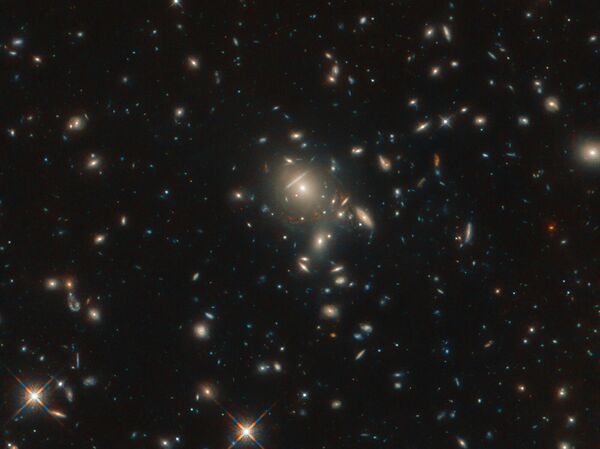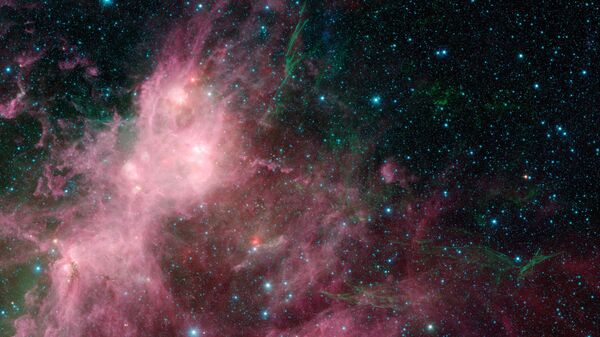Researchers are currently pondering on a new cosmic mystery - a ghostly circle of radio emissions hanging out in space like a cosmic smoke ring, as was seen in a snapshot featured in a presentation by astrophysicist Anna Kapinska back in September 2019.
A few days later, her colleague Emil Lenc spotted a second one, even more puzzling than Anna's, prompting them to scrutinise the new images from pilot observations for the Evolutionary Map of the Universe (EMU) project, captured by the revolutionary Australian Square Kilometre Array Pathfinder (ASKAP) telescope.
As part of the EMU aimed to probe parts of the Universe where no telescope has reached before, a team of researchers spotted the mysterious round blobs and dubbed them ORCs, which stands for "odd radio circles". A a question has since arisen: what are they?
"At first we suspected an imaging artefact, perhaps generated by a software error. But we soon confirmed they are real, using other radio telescopes", lead researcher Professor Ray Norris, from the School of Science, Western Sydney University, wrote for The Conversation.
He further admitted that scientists are still in the dark about their dimensions and how far away they are. "They could be objects in our galaxy, perhaps a few light-years across, or they could be far away in the Universe and maybe millions of light years across", he noted.
One of the assumptions is that the rings of radio emissions are probably caused by clouds of electrons, but the theory falters as the researchers don't see anything in visible wavelengths of light.
The team has already ruled out several explanations for what ORCs could actually be. In the first place, the ORCs are just too far away from any other stars or galaxies to be supernova remnants, and they are too weirdly circular and symmetrical to be the giant tangled lobes of radio emissions observed in radio galaxies.

The ORCs are simply too symmetrical, and there is no observable cluster at their centre, which has led the researchers to believe they are not Einstein rings in which radio waves from a faraway galaxy are being bent into a circle by the gravitational field of a galactic cluster.
Thus, the researchers conclude that these odd radio circles are a brand new astronomical object, although they may still be associated with some known phenomena, like fast radio bursts or the collisions between black holes and neutron stars.
The follow-up observations and review of the latest ones are soon to be unveiled in Publications of the Astronomical Society of Australia.


